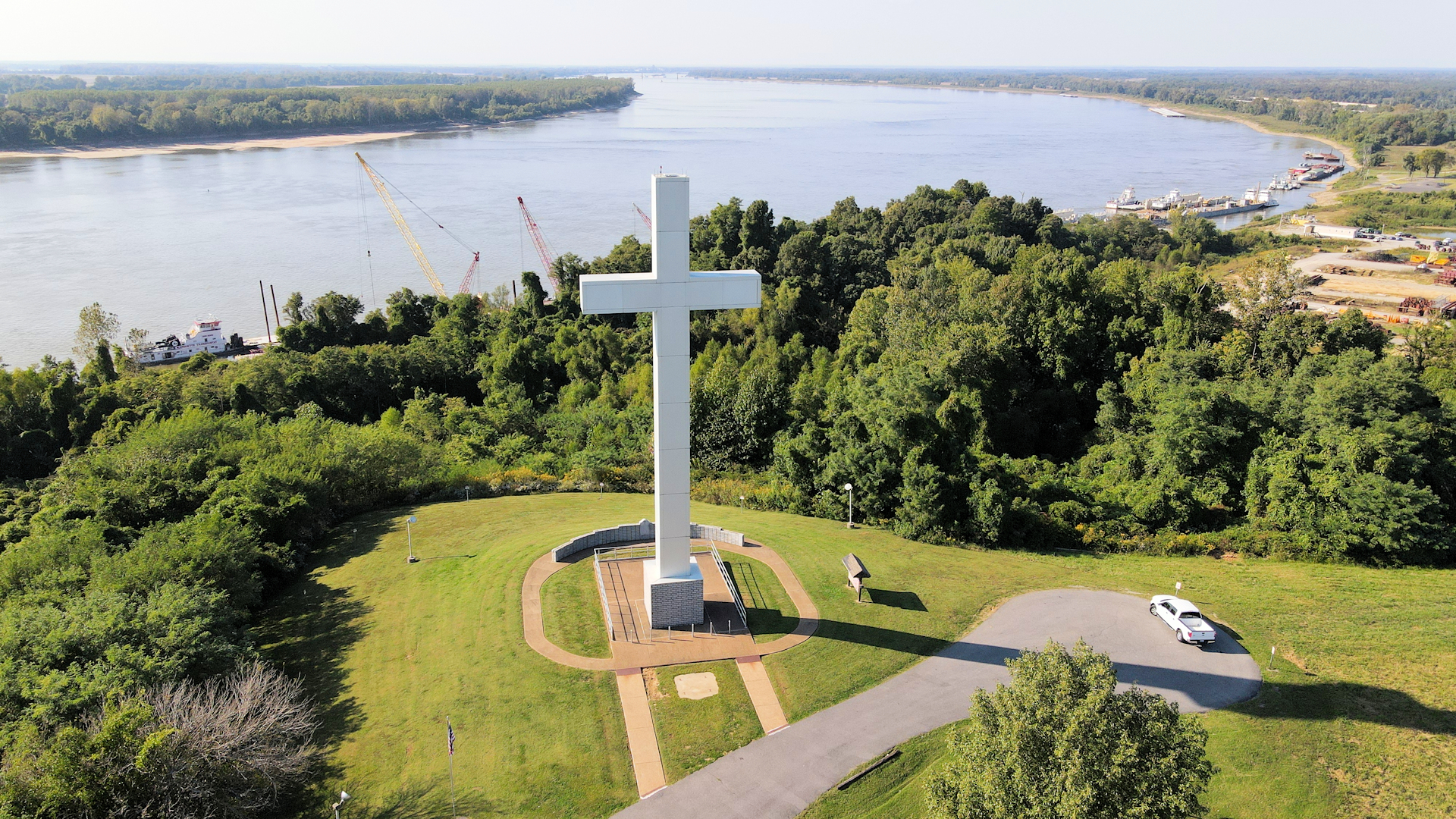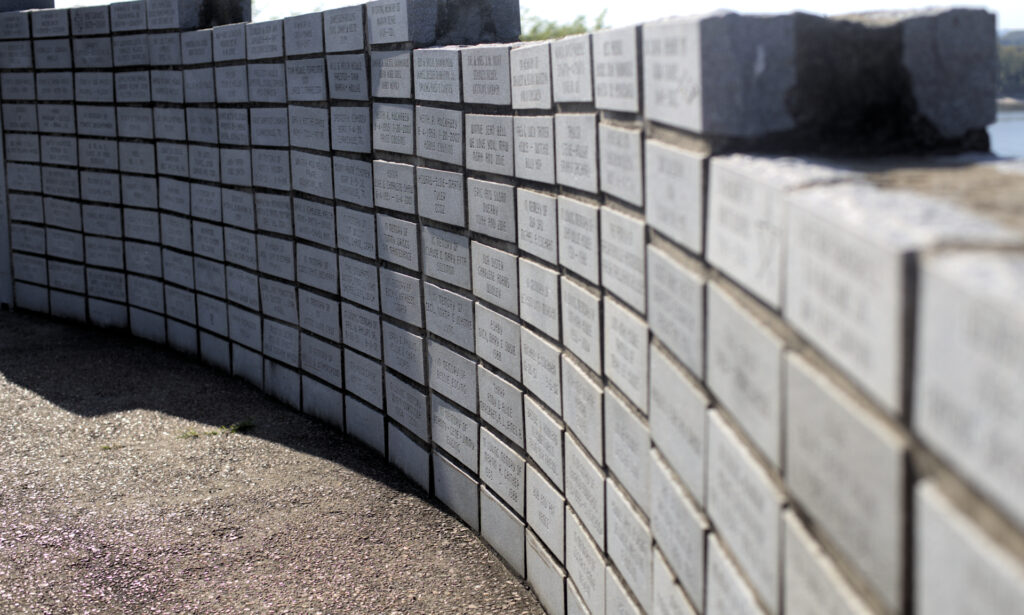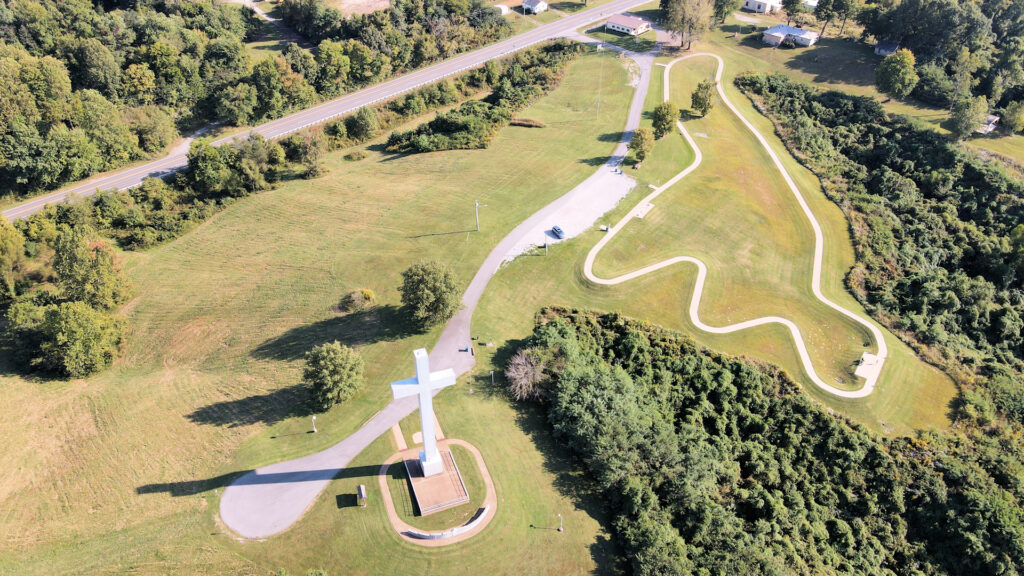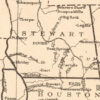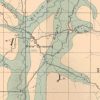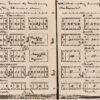If you’ve traveled through Wickliffe, perhaps making a run to Lamberts in Sikeston for some “throwed rolls”, a large cross sitting on a hill likely grabbed your attention.
That’s the Fort Jefferson Cross, which marks the location of the first European settlement in far western Kentucky. Fort Jefferson and the community of Clarksville became a short-lived stronghold for protecting the western border of the United States during the Revolutionary War.
Fort Jefferson's Beginnings
George Rogers Clark (the brother of William Clark of the famed Louis & Clark Expedition) wanted to build a fort near the mouth of the Ohio River to protect the western border of the United States. British forces, aligning with certain Native American tribes, provided a constant threat to the fledging United States by using the Mississippi and Ohio rivers.
Governor Thomas Jefferson of Virginia gave the orders to build the fort in 1778, but it took a little over two years to establish. Receiving help from the Kaskaskia, one of the regional Native American tribes, Clark began construction of the fort with about 150 soldiers on April 11, 1780.
The construction of Fort Jefferson and the establishment of the civilian town of Clarksville wrapped up in June. However, things would quickly turn for the worse.
In a matter of days after completing the fort, the Chickasaw, who were aligned with the British, began attacking the fort and surrounding community. Three people were killed in the first attack on June 7, but the pioneers didn’t give up.
Despite threats from the British and Chickasaw, a petition was made to Virginia to formally recognize Clarksville as a town and a new county of the Commonwealth. Morale was still high as the Americans received aid from the local Kaskaskia. They also helped defend the area by fighting against the British-backed Chickasaw.
However, hopes of permanently settling Fort Jefferson and Clarksville were short-lived. In the summer of 1780, attacks ramped up from the Chickasaw – corn crops were destroyed, and more lives were taken.
Later in September, sickness and disease spread throughout the area. Families began to leave, returning east to places where provisions and supplies were more accessible and further away from war.
For those who remained at Fort Jefferson, supplies trickled in from New Orleans and places further upstream the Ohio River. Historic accounts show that the population of the fort dwindled to just 69 men, eight women and 10 children – only 87 total.
On June 8, 1781, one year and one day after the first recorded Chickasaw attack, the remaining Americans abandoned the fort and headed upstream toward present-day Louisville.
While there is some uncertainty as to the exact location of the fort, most agree it was located just north of where Mayfield Creek empties into the Mississippi River. It’s possible parts of the fort and town sank into the river below due to flooding and erosion.
Fort Jefferson During & After the Civil War
Fort Jefferson lie dormant and unoccupied for decades until 1858 when Joseph Dupoyster purchased 1000 acres of timber and opened a general store at the site.
During the Civil War, Union General Ulysses S. Grant used Fort Jefferson as a staging area to attack key Confederate posts at Columbus and Fort Henry. Fort Jefferson played a crucial role in offering logistical support and supplies for the Union, which helped forces take control of western Kentucky and beyond.
Post offices opened and closed several times from June 1860 until the name changed to Wickliffe on August 25, 1879. Another post office at Fort Jefferson opened in January 1891 but ceased in September of the following year with mail going to nearby Wickliffe.
There is a reference in the Acts of the Kentucky General Assembly in 1889/90 to incorporate Fort Jefferson, but apparently nothing became of it.
Add Your Heading Text Here
Fast forward to modern times, several attempts were made by local leaders to establish a state park at the site of Fort Jefferson. These efforts were largely unfruitful, but local leaders didn’t give up. The city of Wickliffe purchased the hill were Fort Jefferson stood and leased two more acres to for the idea to build a park at the site.
Churches from Ballard County began an endeavor to raise funds for a large cross in the early 1990s. One of those fundraising projects featured the sale of bricks of generous donors. By 1994, churches, organizations and other philanthropists raised enough funds to break ground on the new 95-foot cross.
After five years of construction with costs over $300,000, the project was finally completed in 1999.
Today the cross and the surrounding park is a great setting for looking out across the Mississippi River. At night the cross is lit and can be seen from not only Kentucky, but also Missouri and Illinois.


